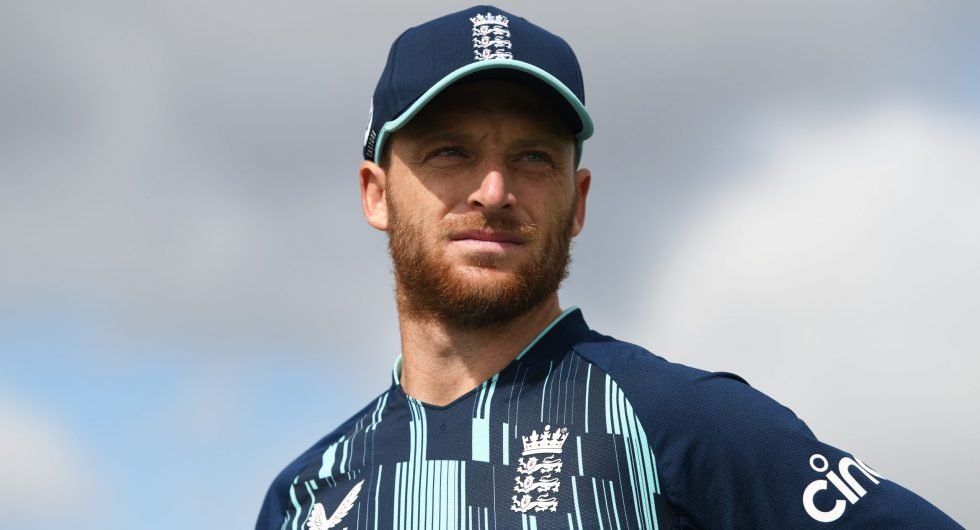England haven’t suddenly got bad at white-ball cricket – they have been struggling for a while

 by Ben Gardner
by Ben Gardner
@Ben_Wisden 4 minute read
Well, it was fun while it lasted.
England enjoyed a lovely half-decade as the best limited-overs side in the world, but it had to end sometime. And with the Test team only capable of being good when the white-ball team is not – Eoin Morgan presumably having struck some sort of deal with the devil – and Bazball here to stay, maybe that’s it for the foreseeable. The halcyon Morgan era has given way to the murkier climes of the Mott-Buttler axis. England might never have it as good again. Four home series, three defeats, one draw. Overnight, the magic stardust has disappeared.
Or has it? It’s tempting to hark back to 2015, remember Morgan’s Midas touch, and conclude that that was responsible for everything good about England in ODIs and T20Is. But while matters have come to a head this summer, England’s form has wavered for some time now. Not since the 2019 Cricket World Cup have England truly been dominant in any format. Recognising that is crucial in order to appreciate the size of the task awaiting Matthew Mott, and also in absolving him of some of the blame for the apparent downturn.
So let’s track back to what followed that golden day at Lord’s, and what you’ll find is a mish-mash of close-run series and startling setbacks, intermingled with the odd flex of strength. A 3-2 T20I series victory against New Zealand, won in a Super Over, was followed by 2-1 series wins over South Africa and Australia and a 1-1 draw with Pakistan. These results are hardly the harbingers of disaster, but nor did they come with the assured confidence of the world’s best.
A 3-0 T20I series win in South Africa stands out as England’s best post-World Cup series result in the shortest format, but what has followed has not been smooth: A 3-2 defeat in India, series wins over Pakistan and a weak Sri Lanka side, and then the semi-final T20 World Cup exit to a New Zealand side light on star power. Morgan’s last series as T20I skipper was a defeat to West Indies.
In ODI cricket, the story has been much the same. A clean sweep of their five completed games last summer stand out, including a whitewash with a second-string side against Pakistan. But aside from that, England’s only series victories have come against the Netherlands and Ireland, with the latter including a dead-rubber defeat. Series defeats to Australia and India and a draw against South Africa have solidified the impression of a team standing still, if not going backwards.
There are caveats to plenty of this, of course. The pandemic and cricket’s unrelenting schedule have meant that England’s best XI has rarely got onto the park at the same time. The 2019 World Cup final will remain forever the last time England’s mythical top six of Jason Roy, Jonny Bairstow, Joe Root, Eoin Morgan, Ben Stokes and Jos Buttler lined up in the same ODI side. Chris Woakes, Jofra Archer and Mark Wood, England’s three first-choice seamers throughout that tournament, have all spent considerable time sidelined through injury.
But injuries happen, and all teams suffer absences, and besides, if anything, it’s the form of the regulars that should worry England most: of England’s World Cup final XI, Bairstow is the only one to average more than 40 in ODIs since that event, while several fringe players have impressed. Sam Billings, Dawid Malan and Phil Salt all average north of 50 in that time, and James Vince averages 43. Just over a year out from their title defence, England have lost two of their top six to retirement, with no nailed-on replacement as yet, with questions growing over one of the others: Roy averages a smidge over 30 since the 2019 World Cup in ODIs, and has endured a horror show in T20Is this summer.
England’s top six in the lead up to the World Cup was truly freakish. Between the end of the 2015 tournament and the 2019 World Cup final, England had seven regular top-six batters, with Bairstow taking Alex Hales’ spot as first-choice opener in 2017. All seven of those batters averaged more than 40, with five averaging more than 45, Stokes averaging exactly 50, and Root an eye-watering 58.75. All seven scored at a strike-rate of more than 90, with six scoring above 95 and three at above a run a ball. Buttler’s record, averaging 47.46 at a strike-rate of 124.59, bordered on the absurd. Their batting line-up was operating at a level perhaps unmatched in ODI cricket history.
Since then, for whatever reason, they have failed to reach the same heights. But to suggest England’s downturn has coincided simply with Mott and Buttler’s arrivals is to overlook that, for a while, an all-conquering white-ball side hasn’t actually conquered all that much.

